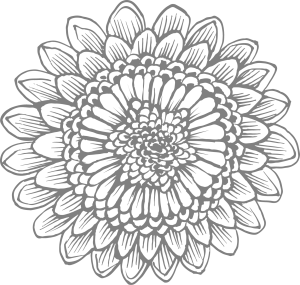GUGLIONESI
Guglionesana tradition continues to preserve, on the eve of the feast of St Adam, the reception of the float at ‘fuori porta’, i.e. in the place where the former Porta Frentana, also known as ‘porta da piedi’, once stood. The triumphal float, decorated with ivy, comes from the place known as Fonte di Sant’Adamo (St Adam’s spring) and carries the effigy of the saint. In the past, the silver statue, later stolen, was carried in procession. Since 1932, a painting by the painter Nicola Iacobitti has been placed on the cart: this is why the commemoration of the translation is also called the ‘quadro’ (painting) by the community of Guglionesana. A couple of cattle, with cowbells hanging from their collars, pull the triumphal cart, finely decorated and with their horns covered in embroidered cloths. Until the middle of the 20th century, there are traces of a Carrese di Sant’Adamo (St Adam’s parade) with the participation of numerous decorated floats. Instead of a parade, as is the case today, older people remember a procession of several dozen family floats, decorated with plant elements and flowers and drawn by the cattle that were available to almost every family as helpers in agricultural work.
The reliquary bust depicting St Adam parading was made in 1886 by the Fonderia Romana in Rome, in embossed and chiselled silver. The patron saint is depicted in the act of blessing, looking upwards while holding a book of scripture in his left hand. The chasuble and the maniple are richly embossed with plant and floral motifs, including ears of corn and bunches of grapes. A large halo, richly worked, frames the head of the Saint. The base of the statue is decorated with a moulding of overlapping leaves, under which there are: an abbey mitre on the left, the coat of arms of Guglionesi on the right and an eye with the Saint’s relics in the centre.
The custom of celebrating the saints with parades of floats drawn by cattle and decorated with plant and floral elements, both fresh and made of crepe paper, was also evidenced, until a few decades ago, by the procession organised in honour of St Anthony of Padua, in line with many other processions of St Anthony’s floats in the lower Molise area (Santa Croce di Magliano, Tavenna, Palata, Montecilfone and others which have now been discontinued). Evidence of this is the existence of a still active Confraternity of St. Anthony, whose Prior has collected photographs showing a Carrese of St. Anthony in Guglionesi until the 1950s and at the same time as a similar ritual in honour of St. Adam.

VIDEO
IMAGE GALLERY


GUGLIONESI
Guglionesana tradition continues to preserve, on the eve of the feast of St Adam, the reception of the float at ‘fuori porta’, i.e. in the place where the former Porta Frentana, also known as ‘porta da piedi’, once stood. The triumphal float, decorated with ivy, comes from the place known as Fonte di Sant’Adamo (St Adam’s spring) and carries the effigy of the saint. In the past, the silver statue, later stolen, was carried in procession. Since 1932, a painting by the painter Nicola Iacobitti has been placed on the cart: this is why the commemoration of the translation is also called the ‘quadro’ (painting) by the community of Guglionesana. A couple of cattle, with cowbells hanging from their collars, pull the triumphal cart, finely decorated and with their horns covered in embroidered cloths. Until the middle of the 20th century, there are traces of a Carrese di Sant’Adamo (St Adam’s parade) with the participation of numerous decorated floats. Instead of a parade, as is the case today, older people remember a procession of several dozen family floats, decorated with plant elements and flowers and drawn by the cattle that were available to almost every family as helpers in agricultural work.
The reliquary bust depicting St Adam parading was made in 1886 by the Fonderia Romana in Rome, in embossed and chiselled silver. The patron saint is depicted in the act of blessing, looking upwards while holding a book of scripture in his left hand. The chasuble and the maniple are richly embossed with plant and floral motifs, including ears of corn and bunches of grapes. A large halo, richly worked, frames the head of the Saint. The base of the statue is decorated with a moulding of overlapping leaves, under which there are: an abbey mitre on the left, the coat of arms of Guglionesi on the right and an eye with the Saint’s relics in the centre.
The custom of celebrating the saints with parades of floats drawn by cattle and decorated with plant and floral elements, both fresh and made of crepe paper, was also evidenced, until a few decades ago, by the procession organised in honour of St Anthony of Padua, in line with many other processions of St Anthony’s floats in the lower Molise area (Santa Croce di Magliano, Tavenna, Palata, Montecilfone and others which have now been discontinued). Evidence of this is the existence of a still active Confraternity of St. Anthony, whose Prior has collected photographs showing a Carrese of St. Anthony in Guglionesi until the 1950s and at the same time as a similar ritual in honour of St. Adam.
VIDEO
IMAGE GALLERY